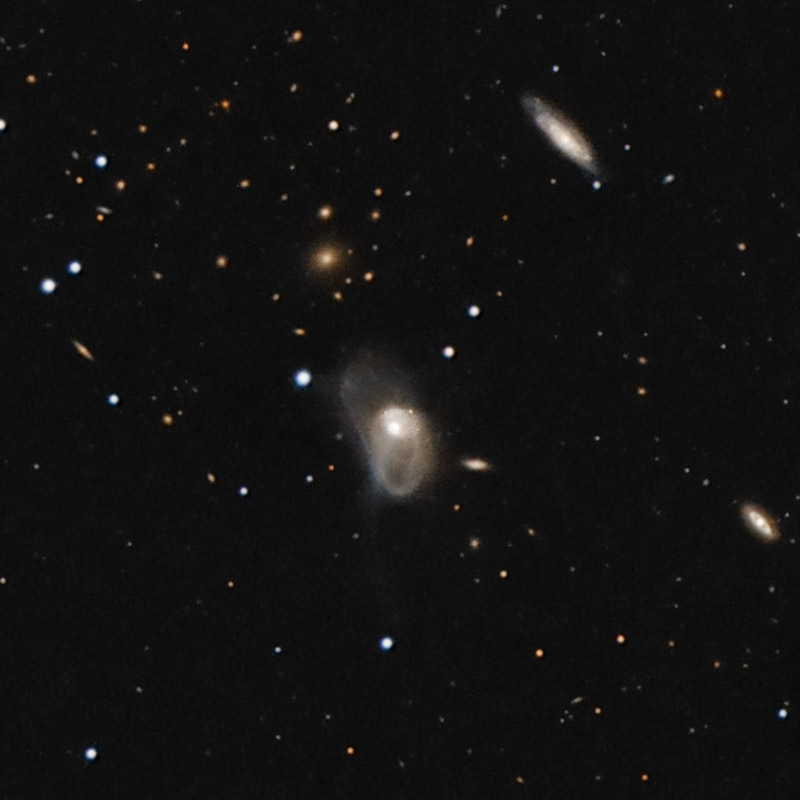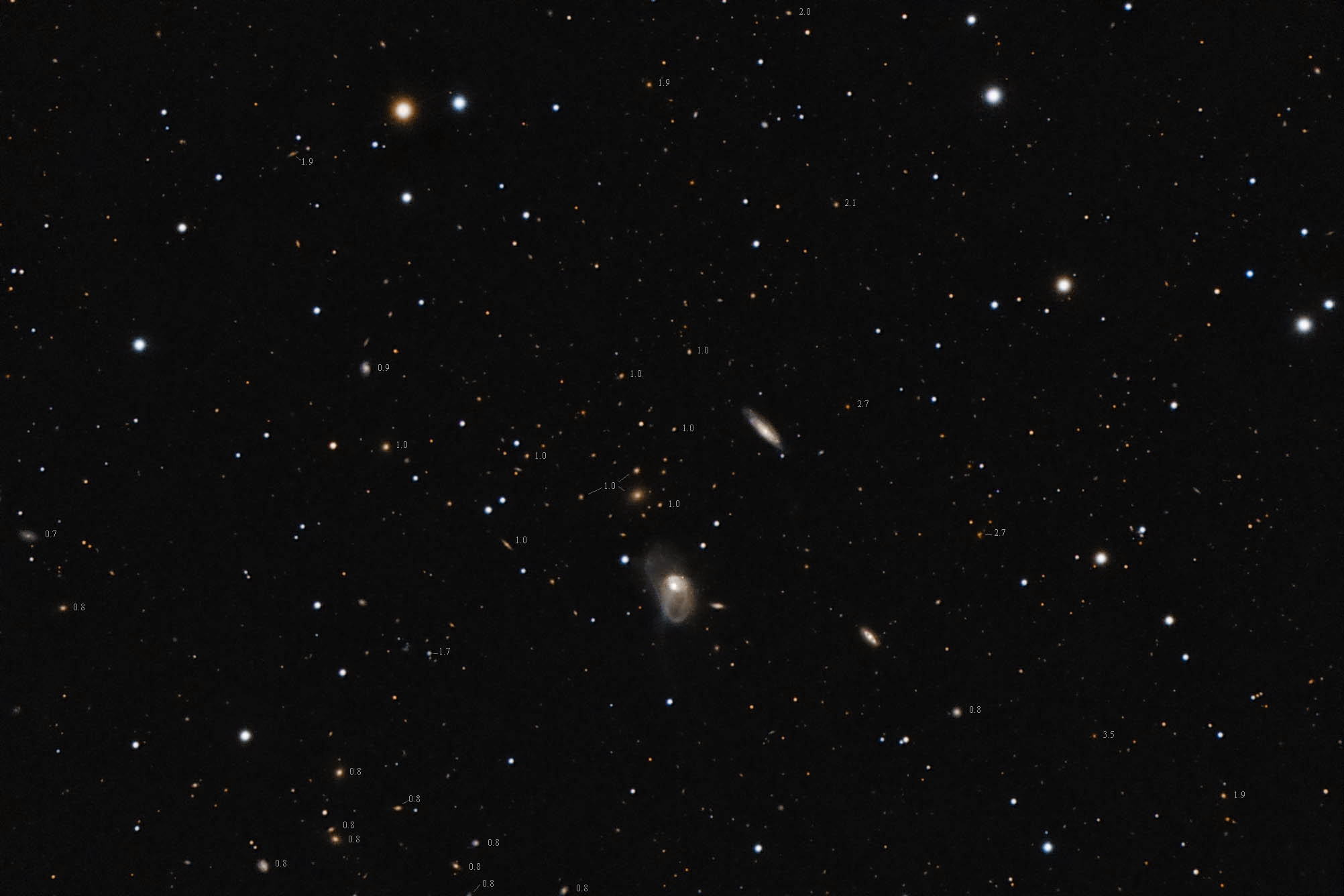| Description | Images |
Object name: ARP224Designation(s): ARP224, NGC3921, NGC3916, ARP 224, NGC 3921, is considered to be a merger in progress. Simulations indicate it is about 0.5 to 0.8 billion years since the merger began. It is part of a cluster of galaxies about 275 million light-years distant and is in the bowl of the Big Dipper not far from Phecda (Gamma Ursae Majoris). Arp included it under Galaxies (not classifiable as S or E): amorphous spiral arms. Though a note in NED incorrectly says it is under the preceding category, adjacent loops. Arp's comment: "Straight filament leads to bright offset nucleus." Yet his image shows it to be slightly curved. The CGCG catalog notes: "Blue disk-like post-eruptive compact with large external loop and extended jets." I would imagine given another billion years or so those stars will settle back into the galaxy creating a large elliptical galaxy. For now, it appears one galaxy left the huge looping tail while the other left the shorter and weaker slightly curved tail. I see only one well-defined core. Since the smaller tail appears to connect to it I'll go out on a limb and say it is the source of that tail. Could it be, it being more massive, pretty well tore up the other less massive one creating the huge looping plume ending in what appears to be a bunch of small "cores" arcing north of the main core? Is that all that's left of its core or is that hidden behind the other one? I'm only guessing here. Related Designation(s):2MASS J11505101+5508371, 2MASS J11510686+5504434, 2MASX J11505098+5508372, 2MASX J11510686+5504433, 2MASXi J1150512+550837, 2MASXi J1151068+550443, 2XMM J115050.9+550836, 2XMM J115107.0+550443, 2XMMp J115050.8+550836, 2XMMp J115107.0+550443, ABELL 1377:[FTC95] 003, ABELL 1377:[FTC95] 005, AKARI J1150512+550844, ARP 224, ARP224, ASK 238165.0, CGCG 1148.2+5525, CGCG 1148.5+5521, CGCG 268-094, CGCG 268-095, CGCG 269-006, CGCG 269-007, CGPG 1148.5+5521, FIRST J115106.8+550443, I Zw 028, IRAS 11481+5525, IRAS 11484+5521, IRAS F11481+5525, IRAS F11484+5521, KUG 1148+553, LDCE 0846 NED001, LDCE 0846 NED002, MAPS-NGP O_131_0060026, MCG +09-20-005, MCG +09-20-009, MRK 0430, NGC 3916, NGC 3921, NGC 3921:[DMT98] 278, NGC 3921:[NPR2004] X01, NGC3916, NGC3921, NSA 041539, NSA 160658, NVSS J115051+550831, NVSS J115106+550445, PGC 037047, PGC 037063, SAFIRES J115106.93+550443.1, SBS 1148+553, SDSS J115051.04+550837.0, SDSS J115051.04+550837.1, SDSS J115051.04+550837.3, SDSS J115051.05+550837.1, SDSS J115106.87+550443.4, SSTSL2 J115051.02+550836.9, SSTSL2 J115106.83+550444.3, UGC 06819, UGC 06823, UZC J115051.1+550836, UZC J115106.8+550443, VV 031, [GGK2005] 19, [TCW2007] 111, [TTL2012] 225670, [UIY2014] 41, | Permanent link: https://images.mantrapskies.com/catalog/ARP-GALAXIES/ARP224-NGC3921-NGC3916/ARP224L4X10RGB2X10R-CROP125.JPG |


